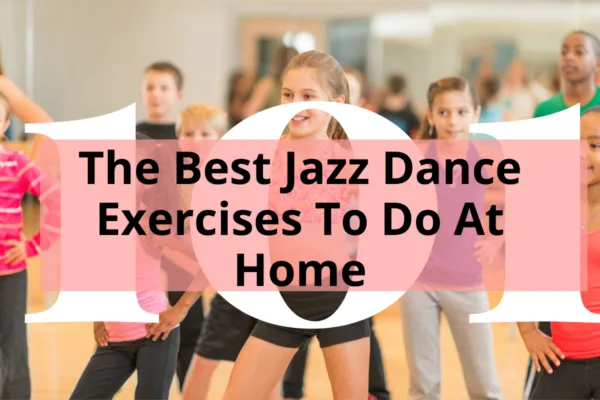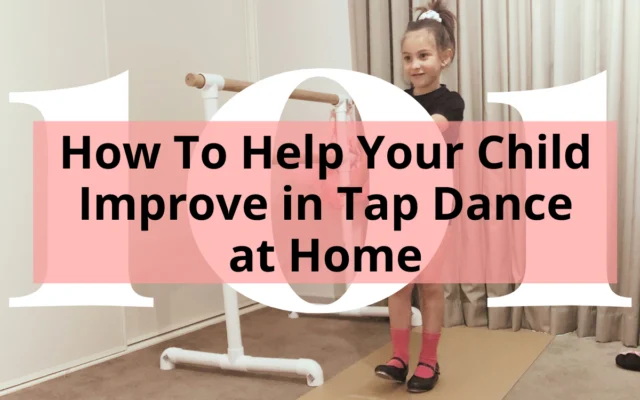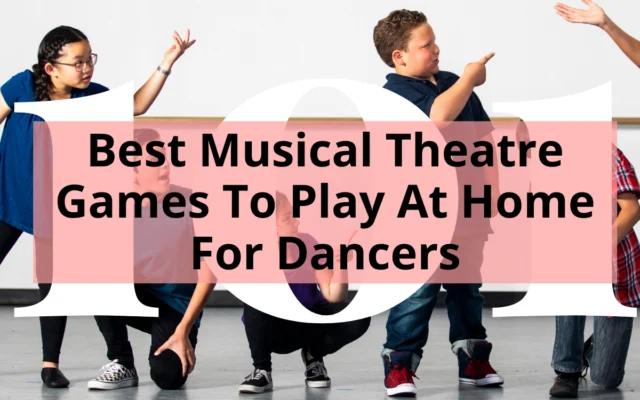By Lesley Mealor / Edited by Samantha Bellerose, B.Ed, Dip.Dance (Performing Arts)
Lyrical dance is one of the most creative styles of dance, because not only are dancers executing interesting steps, movements, and technical elements, they are also telling a story with these movements. Drawing on big emotions and big movements, lyrical can be hard to access for shyer children or quieter personalities.
To help your child improve in lyrical dance, you can encourage practicing at home, promote clear storytelling, and encourage creative improvisation and play in dance practice.

By implementing a few dance and non-dance related things at home, you can help your child feel more comfortable with lyrical dance, and even improve their skills!
Even if you are a parent who is unfamiliar with the dance world, you can still help your tiny dancer excel in their classes, and grow as a person. Some of these suggestions may even help you learn a bit about yourself as well!
- 1. Motivate your Child to Practice At Home
- 2. Create a Space for Practicing Lyrical At Home
- 3. Encourage the Practice of Jazz and Ballet At Home too!
- 4. Practice Lyrical Exercises For Musicality
- 5. Perform Lyrical Exercises For Grace, Posture, and Presentation
- 6. Help your dancer to Develop the Art of Storytelling
- At Home Exercises to Develop Lyrical Dance and Story Telling
- Good Luck and Remember Practice Makes Progress!
- Other Articles You Might Like To Read
1. Motivate your Child to Practice At Home
As with any activity, lyrical dance needs to be practiced more than just in class. But what exactly do you practice for a style of dance like lyrical, which doesn’t really have a codified syllabus?
Lyrical is a hybrid dance style, combining aspects of ballet and jazz, so the focus is often on how to make a ballet step look a bit more jazzy, or alternately, how to make a jazz step a little more graceful. Here are a few ways to help your dancer when practicing at home!
2. Create a Space for Practicing Lyrical At Home
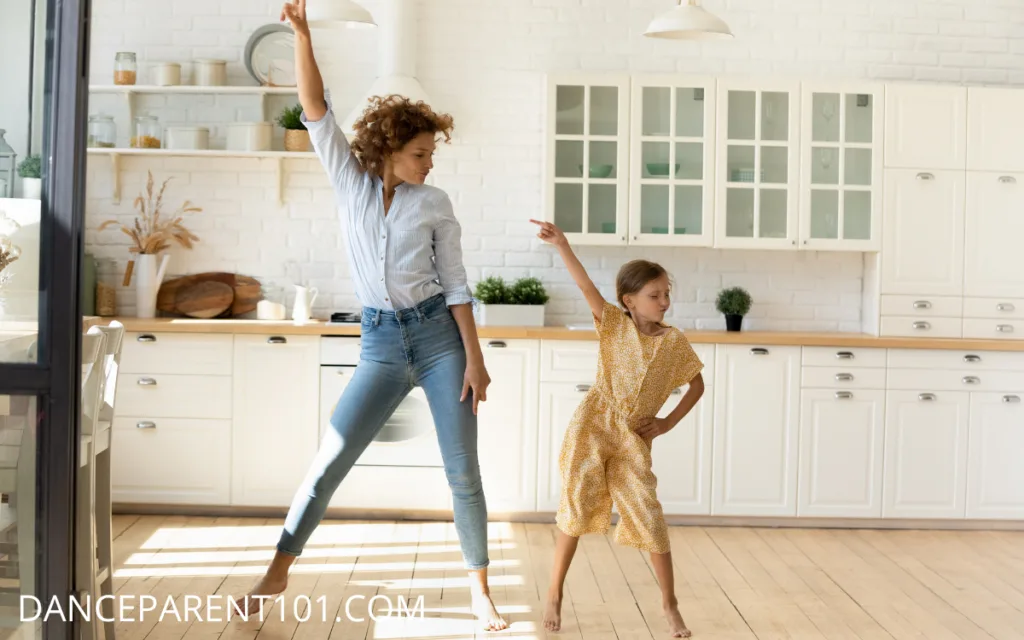
In order to practice lyrical dance at home, you should have an adequate space dedicated to dance.
It doesn’t have to be huge, but it should have a high enough ceiling to accommodate leaping, a solid floor, and a way to play music.
We have many suggestions for creating an at-home dance studio out of many spaces, so if you’re at a loss, check them out here!
3. Encourage the Practice of Jazz and Ballet At Home too!
Both jazz and ballet also need to be practiced on their own to really be successful in lyrical dance. Our articles The Best Jazz Dance Exercises to Do At Home and The Best Ballet Exercises To Do At Home will be helpful for all dancers looking to improve their lyrical dance skills!
4. Practice Lyrical Exercises For Musicality
All styles of dance require musicality, or the ability to hear and interpret music through your body. While musicality is often innate for some people, it can also be taught, honed, and improved upon by those who don’t come to it naturally.
In lyrical dance, musicality is especially important because good musicality helps to tell the story and convey the emotions of the piece. Luckily, there are some fun exercises that can help young dancers develop their musicality – check them out!
5. Perform Lyrical Exercises For Grace, Posture, and Presentation
Because lyrical dance derives much of its foundation from ballet, posture and presentation are key to making a good lyrical dancer.
If your child moves a bit more like a bull in a china shop instead of a delicate butterfly, exercises that promote grace, fluidity and good posture will be key to helping them succeed in lyrical dance. Find the best exercises to practice at home here!
6. Help your dancer to Develop the Art of Storytelling
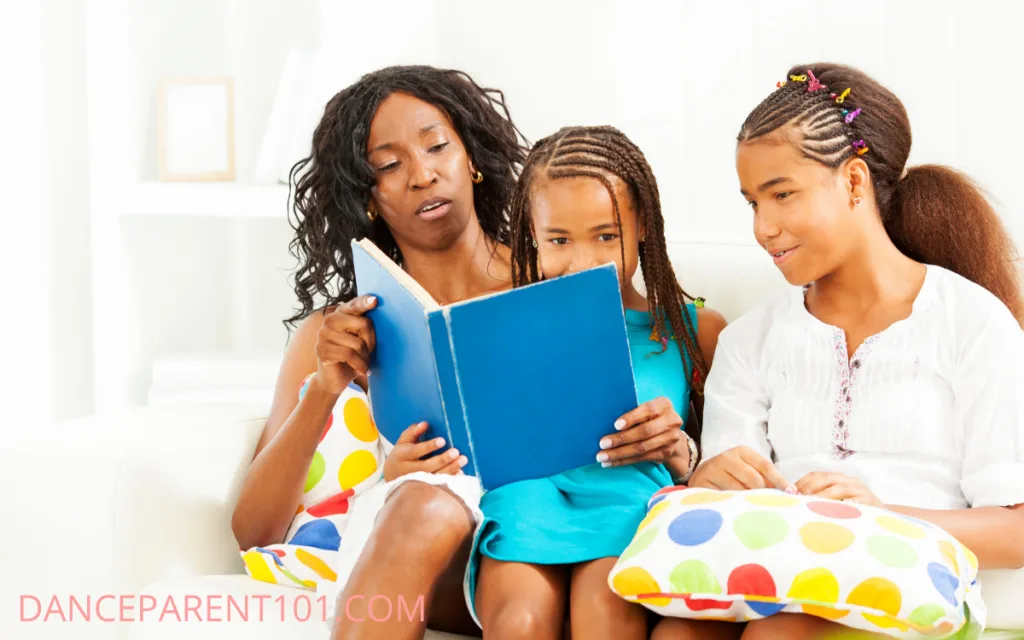
All humans love a good story – we are wired that way! Good lyrical dances have a clear beginning, middle and end, and the story or theme should be clear to everyone watching due to the emotional expression of the dancers.
But if your child struggles with understanding the timelines of stories, or with emotional expression, you can try these tips to help them improve in their storytelling abilities.
At Home Exercises to Develop Lyrical Dance and Story Telling
The following are several ideas for exercises and activities you can do at home with your child or dancer to help develop their lyrical dance quality and ability to story tell while dancing.
1. Retell the Story of a Book or Movie
To help dancers understand storylines in dances, you can start with having them retell the storyline of a favorite book or movie.
Be sure to ask them timeline related questions, like what happened in the beginning, middle, and end of the book or movie.
Also ask them questions about what emotions the characters might have experienced, so that they understand and can talk about different emotions.
Since dance routines don’t involve speaking, once your child is comfortable relaying a story verbally to you, you may try asking them to act it out without words!
This will involve a lot of exaggerated facial expressions and movements, and might feel a little bit like charades at first. Feel free to involve the whole family or a group of friends in this endeavor!
2. Create a Story
Once they’ve mastered acting out a story without words, the next step would be to have your dancer create their very own story.
They could tell a story based on their own life and experiences, or create an imaginary character. It could be a scene that is acted out, or a dance routine.
Either option will be helpful for your dancer to become more secure with expressing emotions through a story.
If your dancer is old enough to write, have them write down their story so they can reference it during the creation of the dance or the scene. This is really the beginning of learning how to choreograph!
You may find that your dancer feels more comfortable expressing emotions if they’re in her control, as with creating their own piece of work.
However, some dancers prefer more structure and that’s why this next tip is also an option!
3. Take an Acting Class
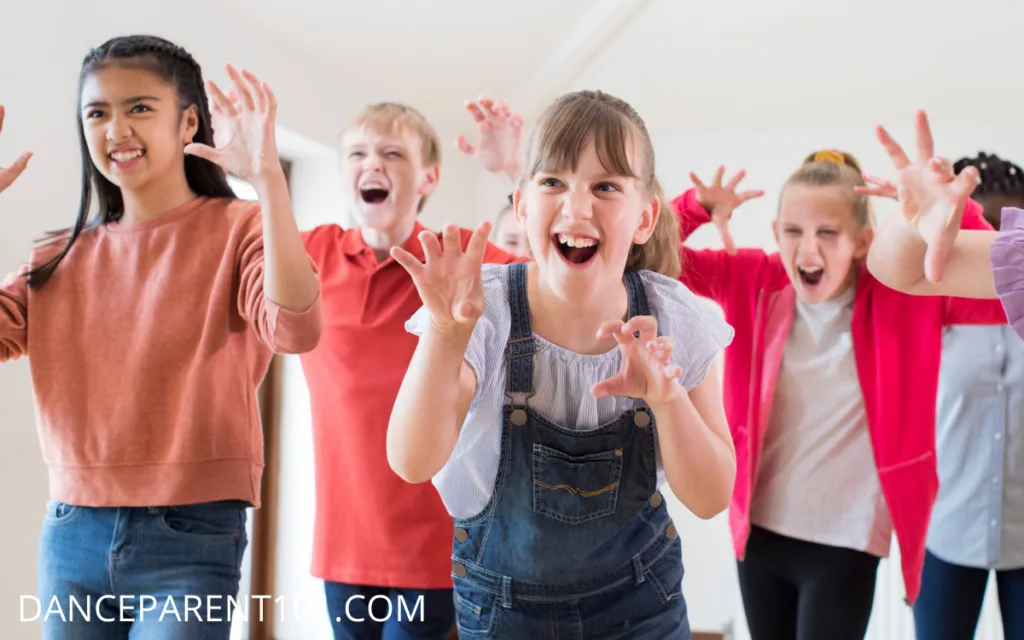
Dancers who have a hard time expressing emotion on stage during lyrical dance may benefit from acting classes.
Children’s drama programs can be found in community theatres and independent studios, and involve all sorts of fun, structured activities that can complement dance training.
Because lyrical dance is so highly emotional and story-driven, being more comfortable with portraying big emotions can enhance a dancers’ performance.
4. Encourage Creative Improvisation in Play and Dance Practice
So much of lyrical dance is simply moving in a way that feels good – a body roll as the piano trills, a soaring leap on the crescendo of the music.
In order for young lyrical students to grow into technically proficient dancers, it’s very important to allow for creativity and play from the beginning of training, so that it is ingrained into them as they progress.
When your child is at home practicing lyrical dance, you can help by encouraging them to be creative.
That could mean anything from choosing interesting music, to providing props, or giving them a prompt for a story or emotion. Any of these suggestions will be helpful for your dancer to explore even more ways to move.
5. Play Interesting Music
While it’s true that most lyrical dance is done to emotional ballads, you can help your child experiment with different music choices to vary their go-to songs (because aren’t we all tired of “Let It Go”?)
Find music that has a range of emotions – not all lyrical dances have to be sad! Spotify and YouTube are your friends.
You can play a game of Music Roulette by finding a kid-friendly playlist and challenging your child to express certain emotions to each song.
Change it up frequently, and choose emotions that seem contradictory to the song for an added challenge.
6. Provide Fun Props
All kids love dancing with props, and for lyrical you have many choices. From scarves, to stuffies, to magic wands, capes, hats, or flowers – the possibilities are endless.
Along with the props, you can also provide conditions and guidance on how to use them. One great example would be to dance with the prop only in your left hand.
Or, dance with the prop changing hands every 8 counts. Have fun coming up with new ways to use props!
7. Give a Prompt
One of my favorite lyrical exercises to use in the studio can also be easily used at home. Give your dancer a prompt.
That can be a story outline, an image or inanimate object to portray, or a circumstance.
For example, you could ask them to portray through dance, a stream that’s running down a hill. This might provoke some floor work, rolls to the floor, or interesting arm movements.
Another idea would be to give a circumstance like, “Your best friend is moving across the country”. How would that circumstance be reacted to through dance? My guess is there would be a lot of heavy movements, large port de bras, and sad facial expressions.
By using prompts, you will help your dancer come out of their comfort zone of movement and facial expressions.
All dancers have their go-to steps and phrases that feel good to them, but by changing up the circumstances by offering a new prompt, you can vary the range of emotions and movements that are produced.
Good Luck and Remember Practice Makes Progress!
Lyrical dance is always a favorite among young dancers due to the storytelling and emotional aspects of the movement. If you give them the opportunity to engage with their emotions at an early age, by the time they are technically advanced in their training they will also be emotionally advanced and able to tell the story of any lyrical piece that’s given to them without hesitation.

